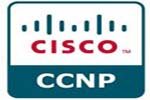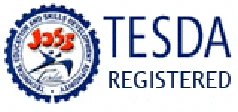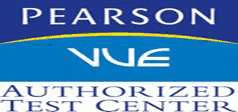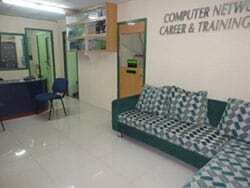COURSE DURATION: 30hrs
Course Description:
This course is a five-day, instructor-led course that prepares you to pass the 300-101 ROUTE exam which is part of the CCNP Routing and Switching certification path. This will also demonstrates your skills and capability in using advanced IP addressing and routing in implementing scalable and highly secure Cisco routers that are connected to LANs, WANs, and IPv6.
Exam Code: 300-101 – Implementing Cisco IP Routing (ROUTE)
END OF THE ROAD: This course is no longer offered for Certification effective Feb 24, 2020 . Please check this link for the New CCNP Enterprise Certification
Course Outcome:
- Implement routing protocols, different remote connectivity options, and their impact on routing
- Configure EIGRP in IPv4 and IPv6 environments
- Configure OSPF in IPv4 and IPv6 environments
- Implement route redistribution using filtering mechanisms
- Implement path control using policy-based routing and IP SLA
- Implement enterprise Internet connectivity
- Secure Cisco routers according to best practices and configure authentication for routing protocols
Course Prerequisite:
Should be CCNA Certified
Training Materials:
Cisco Press Book
CISCO LAB EQUIPMENTS:
- CISCO Routers: 2901, 2801 and 1841
- CISCO Switches: Catalyst 3550 Layer 3 (Multi-Layer) series, Catalyst 3750 Series Layer 3
- WIRELESS: AIRONET 1242AG LWAPP
Practice Exams: 300-101
Course Outline:
Chapter 1: Network Principles

Identify Cisco Express Forwarding concepts
- FIB
- Adjacency table
Explain general network challenges
- Unicast
- Out-of-order packets
- Asymmetric routing
Describe IP operations
- ICMP Unreachable and Redirects
- IPv4 and IPv6 fragmentation
- TTL
Explain TCP operations
- IPv4 and IPv6 (P)MTU
- MSS
- Latency
- Windowing
- Bandwidth-delay product
- Global synchronization
Describe UDP operations
- Starvation
- Latency
Recognize proposed changes to the network
- Changes to routing protocol parameters
- Migrate parts of the network to IPv6
- Routing protocol migration
Chapter 2: Layer 2 Technologies
Configure and verify PPP
- Authentication (PAP, CHAP)
- PPPoE (client side only)
Explain Frame Relay
- Operations
- Point-to-point
- Multipoint
Chapter 3: Layer 3 Technologies
Identify, configure, and verify IPv4 addressing and subnetting
- Address types (Unicast, broadcast, multicast, and VLSM)
- ARP
- DHCP relay and server
DHCP protocol operations
Identify IPv6 addressing and subnetting
- Unicast
- EUI-64
- ND, RS/RA
- Autoconfig (SLAAC)
- DHCP relay and server
- DHCP protocol operations
Configure and verify static
routing
Configure and verify default routing
Evaluate routing protocol types
- Distance vector
- Link state
- Path vector
Describe administrative distance
Troubleshoot passive interfaces
Configure and verify VRF lite
Configure and verify filtering with any protocol
Configure and verify redistribution between any routing protocols or routing sources
Configure and verify manual and autosummarization with any routing protocol
Configure and verify policy-based routing
Identify suboptimal routing
Explain ROUTE maps
Configure and verify loop prevention mechanisms
- Route tagging and filtering
- Split-horizon
- Route poisoning
Configure and verify RIPv2
Describe RIPng
Describe EIGRP packet types
Configure and verify EIGRP neighbor relationship and authentication
Configure and verify EIGRP stubs
Configure and verify EIGRP load balancing
- Equal cost
- Unequal cost
Describe and optimize EIGRP metrics
Configure and verify EIGRP for IPv6
Describe OSPF packet types
Configure and verify OSPF neighbor relationship and authentication
Configure and verify network types, area types, and router types
- Point-to-point, multipoint, broadcast, nonbroadcast
- LSA types, area type: backbone, normal, transit, stub, NSSA, totally stub
- Internal router, backbone router, ABR, ASBR
- Virtual link
Configure and verify OSPF path preference
Configure and verify OSPF operations
Configure and verify OSPF for IPv6
Describe, configure, and verify BGP peer relationships and authentication
- Peer group
- Active, passive
- States and timers
Configure and verify eBGP (IPv4 and IPv6 address families)
- eBGP
- 4-byte AS number
- Private AS
Explain BGP attributes and best-path selection
Chapter 4: VPN Technologies
Configure and verify GRE
Describe DMVPN (single hub)
Describe Easy Virtual Networking (EVN)
Chapter 5: Infrastructure Security
Describe IOS AAA using local database
Describe device security using IOS AAA with TACACS+ and RADIUS
- AAA with TACACS+ and RADIUS
- Local privilege authorization fallback
Configure and verify device access control
- Lines (VTY, AUX, console)
- Management plane protection
- Password encryption
Configure and verify router security features
- IPv4 access control lists (standard, extended, time-based)
- IPv6 traffic filter
- Unicast reverse path forwarding
Chapter 6: Infrastructure Services
Configure and verify device management
- Console and VTY
- Telnet, HTTP, HTTPS, SSH, SCP
- (T)FTP
Configure and verify SNMP
- v2
- v3
Configure and verify logging
- Local logging, syslog, debugs, conditional debugs
- Timestamps
Configure and verify Network Time Protocol (NTP)
- NTP master, client, version 3, version 4
- NTP authentication
Configure and verify IPv4 and IPv6 DHCP
- DHCP client, IOS DHCP server, DHCP relay
- DHCP options (describe)
Configure and verify IPv4 Network Address Translation (NAT)
- Static NAT, dynamic NAT, PAT
Describe IPv6 NAT
- NAT64
- NPTv6
Describe SLA architecture
Configure and verify IP SLA
- ICMP
Configure and verify tracking objects
- Tracking objects
- Tracking different entities (for example, interfaces, IPSLA results)
Configure and verify Cisco NetFlow
- NetFlow v5, v9
- Local retrieval
- Export (configuration only)
[testimonials category=”ccna-and-ccnp-certifications” paging=”1″]
[crp]







